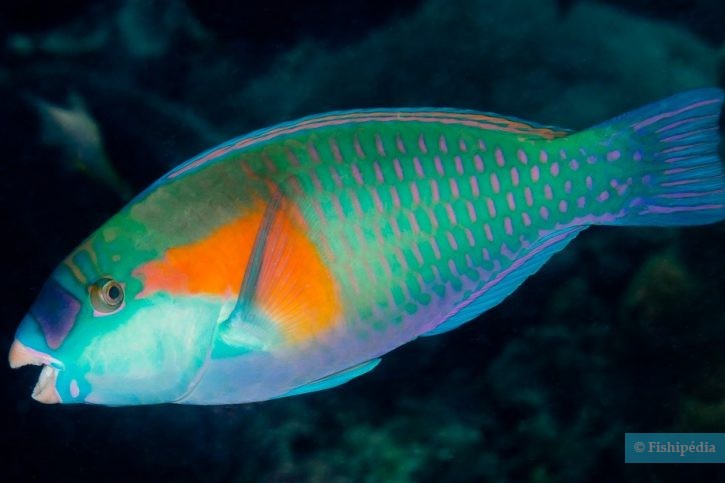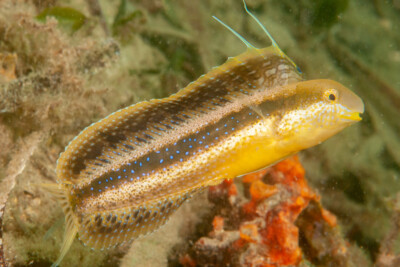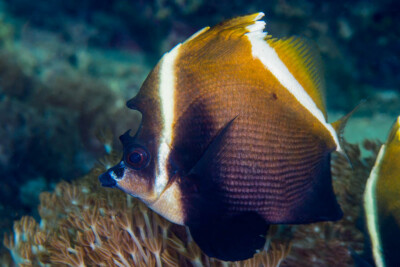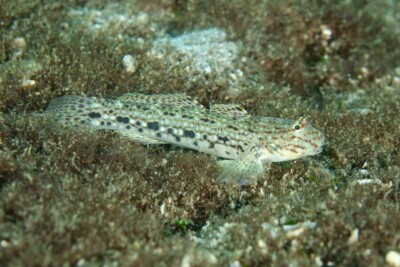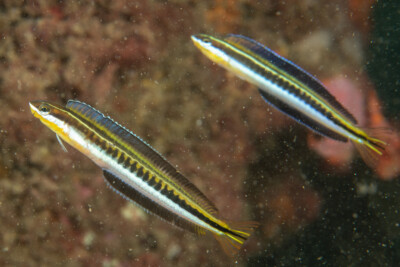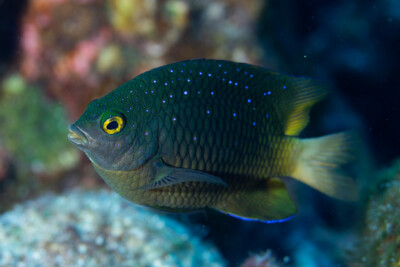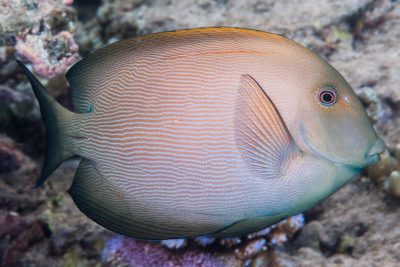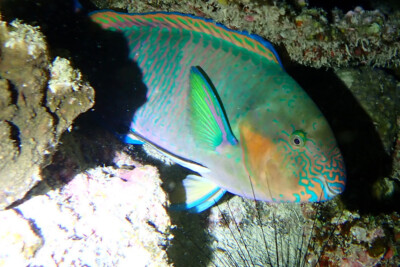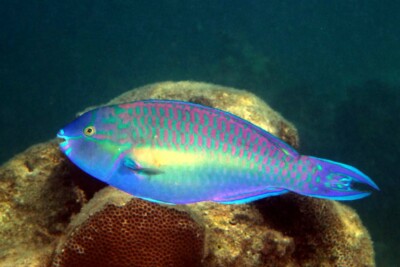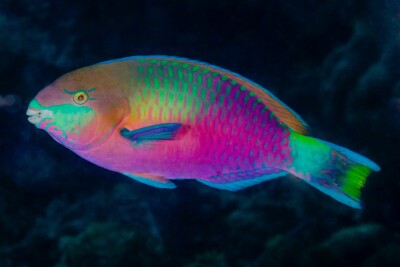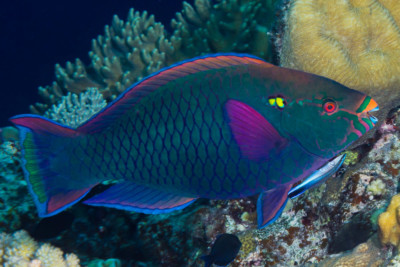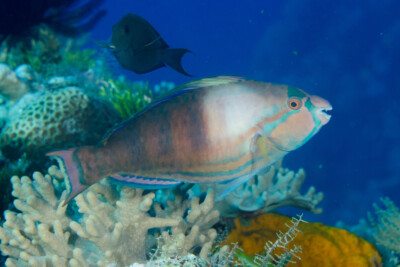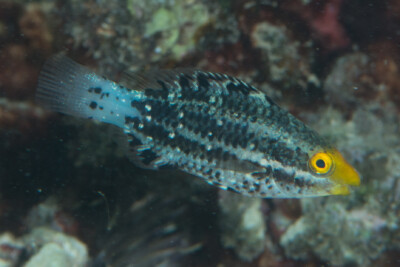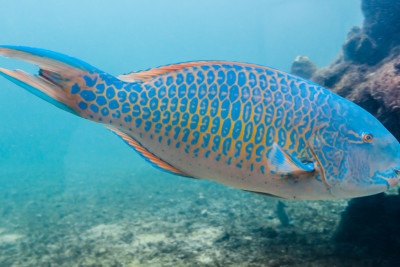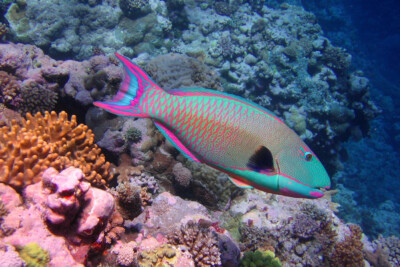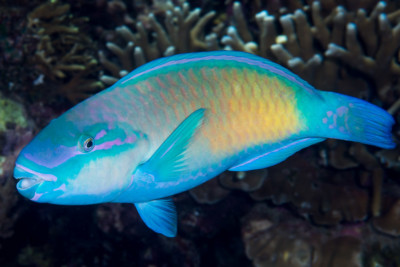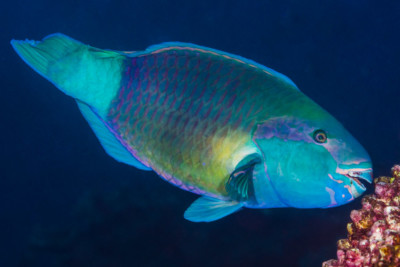bower's parrotfish
| Scientific name | Chlorurus bowersi |
|---|---|
| Descriptor | Snyder |
| Year of description | 1909 |
| IUCN category (World) | NT |
| Family | Scaridae |
| Genus | Chlorurus |
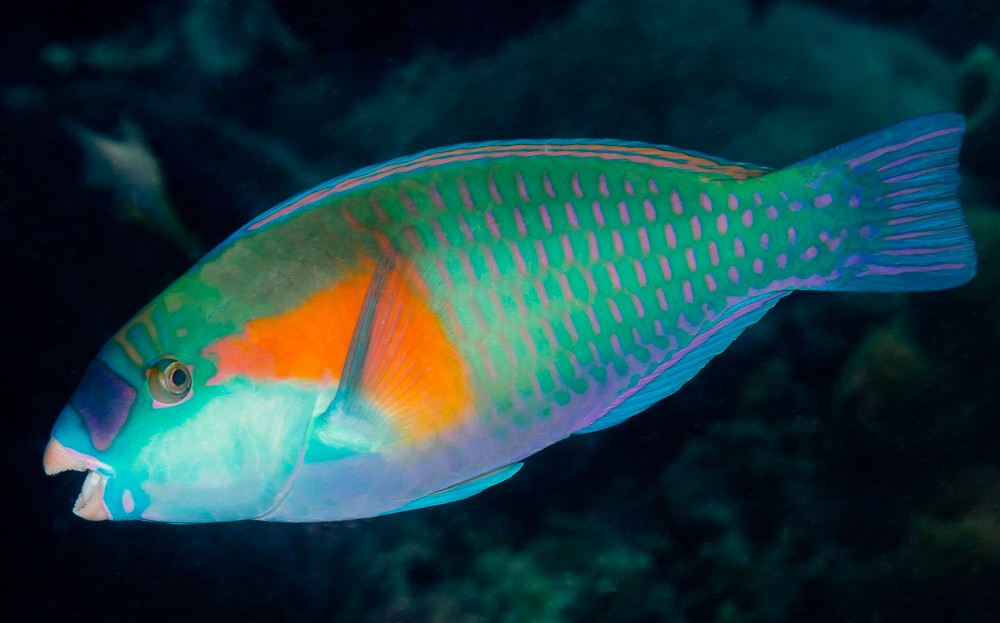

Introduction
Chlorurus bowersi is a tropical fish native to the Indo-Pacific region. It can be found from the sea of the Philippines to the Great Barrier Reef. It is a relatively common inhabitant of the shallow waters of reef zones and lagoons.
It has been observed in the western Pacific: in the Philippines, off the coast of Java (Indonesia), not far from the Ryukyu archipelago and the Palau archipelago.
Who is it?
Morphology
-
Average size35 cm
-
Maximum size40 cm
-
Average size35 cm
-
Maximum size40 cm
How to recognize This fish ?
Chlorurus bowersi is characterized by a horizontally striped dorsal spine and lips that do not cover the teeth surface.
A large orange spot is visible on the operculum, as well as orange and blue lines on the dorsal fin.
Sexual dimorphism
Males have a bright orange spot with a few scales. Females have the same spot, but slightly less pronounced.
Like all Chlorurus fish, young ones are dark in color and quite difficult to identify. However, unlike other species, a thin red line on their caudal fin has been observed on some specimens.
Behaviour & Life cycle
-
dietherbivorous
-
Sociabilityliving in a group or alone
-
territorialNo
-
Way of livingdiurnal
Chlorurus bowersi is a solitary or in small groups fish. Like its counterparts, it feeds on algae by nibbling on dead corals. This helps wear down its teeth and contributes to sand generation.
Reproduction
-
Reproductionovipare qui pond en eau libre
Chlorurus bowersi is an oviparous fish that spawns in open water.
Harmless species
This species does not represent any particular threats to humans when encountered in its natural environment.
Origin and distribution
Conservation status of populations (IUCN)
What is its habitat?
Natural environment characteristics
-
Depth2 - 25 m
Biotope presentation
The bower's parrotfish is most commonly found at depths less than 35 m. However, it is not impossible to find this fish at other depths.
Species of the same biotope
Fishkeeping
Not recommended
We do not recommend keeping this species in an aquarium. It has unpredictable needs which, if not met, generate significant stress, potentially leading to a shorter life expectancy, an interruption of its growth or the development of pathogens.
To go further
Sources & Contributions
Participation & Validation
The Fishipedia team and specialist contributors are committed to providing high-quality content. However, although the information comes from scientific sources or testimonials from specialists, the cards may contain inaccuracies.

Alexandre Dumaine

Marc Raggi

Benoit Chartrer
Translation
Translation done with the valuable contribution of our translators, who make this information available to a wider audience. We sincerely thank them for their commitment.
Bibliographic references
A Review of Parrotfishes (Perciformes: Scaridae) of Taiwan with Descriptions of Four New Records and One Doubtful Species - Yun-Chih Liao - Kwang-Tsao Shao - I-Shiung Chen - Zoological Studies - 2004.
Life histories predict vulnerability to overexploitation in parrotfishes - Brett M. Taylor - Peter Houk - Garry R. Russ - J. Howard Choat - Coral Reefs - 2014.
Studies on the Reef-Dwelling Fishes of India - Parrotfishes - R.P. Barman - S.S. Mishra - Zoological survey of India - 2005.
The functional morphology, systematics and behavioural ecology of parrotfishes (family Scaridae) - D.R. Bellwood - James Cook University - 2009.
Scientific partners
Tags
Species of the same family
Same genus
Species of the same biotope
